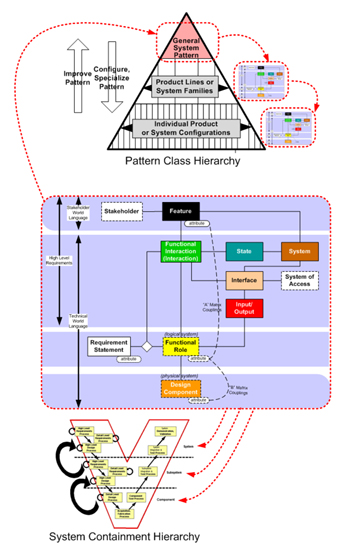Patterns are re-usable, configurable Models:
- Projects don’t generate new “from scratch” models—they configure patterns instead;
- Obtain system plans, requirements, designs, analyses, with less effort, faster, higher completeness and consistency.
Patterns describe re-usable requirements, designs, failure modes, analyses of product lines, platforms, and system families:
- Key to an explicit discipline of platform management, modularity;
- Creates economic leverage--people, resources, infrastructure, enterprise IP.
Pattern approach reduces modeling efforts and necessary modeling skills for individual projects:
- by providing configurable re-usable Models for development project users;
- projects don’t generate new models – they configure Patterns;
- Patterns are re-usable, configurable Models of requirements and designs;
- Obtain requirements / designs with less effort, time, greater quality/completeness.
People learn your enterprise’s own Shared Patterns for Products, Services, or other internal Systems:
- These requirements and design patterns make explicit “hidden IP” that otherwise requires years to learn--your Shared Enterprise Patterns form foundation for a Learning Organization;
- Instead of flat Lessons Learned that must be searched, learning condensed into configurable requirements/design model (Pattern).


